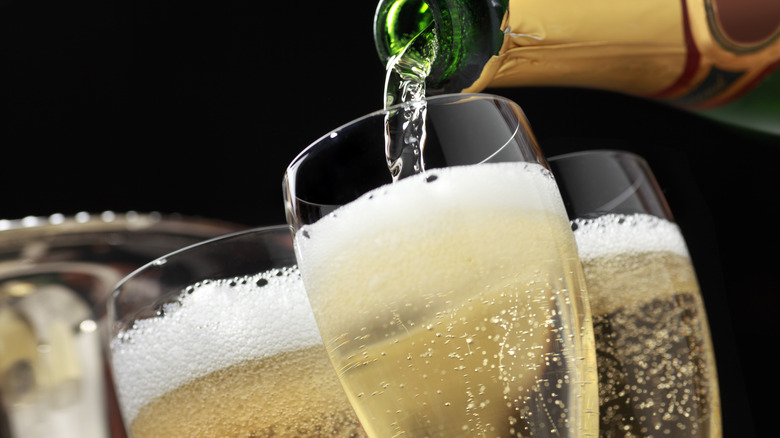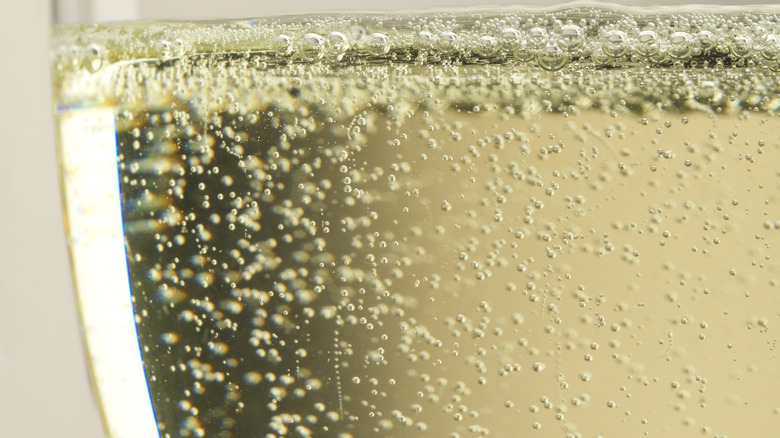Why Champagne Bubbles Rise Differently Than Other Sparkling Drinks
Before bubbles were desirable, they were indicators of a bad batch of wine. It wasn't until the 17th century that winemakers in France deliberately made effervescent white wines, with a complex system of two-step fermentation, which would take months. What makes champagne so charming, and alluring to the eye? Well, unlike other sparkling beverages, its effervescence is sharp and linear: the bubbles rise up rapidly as you let the drink settle into a flute. And the flute makes a perfect vehicle for champagne due to this straight lift of carbonation. In beers, you'll find that the bubbles emerge everywhere randomly, bumping clumsily into one another and sticking to the contours of the pitcher.
There is a detailed science to champagne's bubble formation that sets it apart from all bubbly drinks. Of course, first is the chemical process of fermentation that forms gases (CO2) as a byproduct in the bottle of champagne, but there is also a physical aspect to the way these bubbles move once the champagne is poured into a glass. The speed at which these bubbles race in a perfect line to the top of the drink is due to the surface tension of the bubbles in the drink itself. Scientists have been exploring the mechanism of champagne bubbles for years, trying to figure out what was happening at a molecular level to make such a gorgeous, uniform foam at the top of a champagne glass, and they found out it comes down to the ingredients.
Fatty acids make champagne bubbles beautiful
We feast with our eyes as we do with our stomachs, and this saying could not be more true with champagne. This celebratory drink offers a visually pleasing trail of bubbles that are actually formed by its flavor and fatty acids. So the same ingredients that give champagne its delicious aroma and acidic sweetness also adorn the glass with strings of pearls rising to the top. The fatty acids are responsible for making champagne's surface tension slightly less than that of water, and viscosity 50% higher.
Viscosity lowers the pressure of the bottom half of the bubble. This makes fatty acid molecules attach to the surface of a tiny bubble, making the bubble less stable, pushing it unto itself until it moves directly up and forms a new bubble in its wake. This push is strong enough that the bubble forms a chain of bubbles in a vertical formation. Another force that could help the formation of a perfect chain of fizz is more random: fibers leftover from the washcloth on the glass itself. Tiny cellulose fibers that cling to the champagne flute will create pockets for gas to form, and the viscosity of champagne makes it easy for long trails of CO2 to hug the glass. The next time you have a champagne toast, admire the delicate bubbles that line the flute — they're made with flavor and great care.

